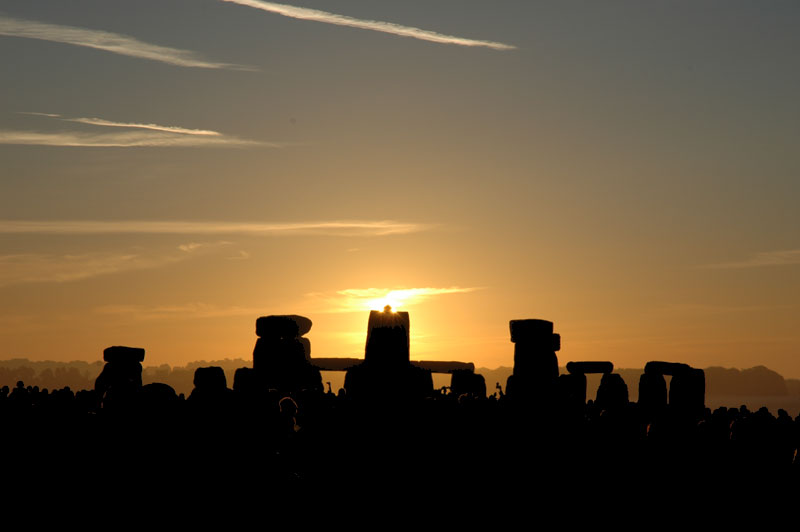
|
Credit & Copyright: Pete Strasser (Tuscon, Arizona, USA)
Explanation:
Today the Sun reaches its northernmost point in the planet Earth's sky.
Called a solstice,
the date traditionally marks a change of seasons -- from spring to summer in
Earth's Northern Hemisphere and from fall to
winter in Earth's Southern Hemisphere.
Pictured above is the 2005 Summer Solstice celebration at
Stonehenge in
England.
The event was rare because
Stonehenge was not always open to the public,
and because recent summer solstices there had been annoyingly cloudy.
In 2005, however, thousands of people gathered at sunrise to see the sun rise
through the
4,000 year old solar monument.
Due to the precession of the Earth's orbital axis over the millennia, the Sun no longer
rises over
Stonehenge in an
astronomically significant way,
although the photographer was able to find a good spot where the
rising Sun
appeared over one of Stonehenge's massive standing stones.
|
January February March April May June July August September October November December |
| ||||||||||||||||||||||||||||||||||||||||||||||||
NASA Web Site Statements, Warnings, and Disclaimers
NASA Official: Jay Norris. Specific rights apply.
A service of: LHEA at NASA / GSFC
& Michigan Tech. U.
Based on Astronomy Picture
Of the Day
Publications with keywords: solstice - sunrise
Publications with words: solstice - sunrise
See also:
